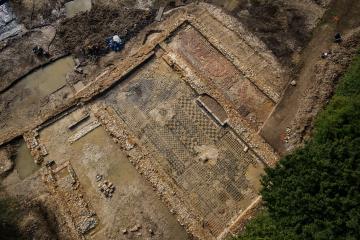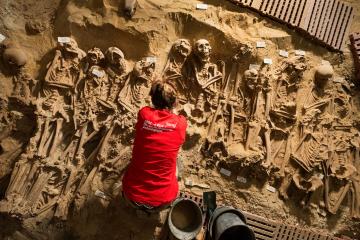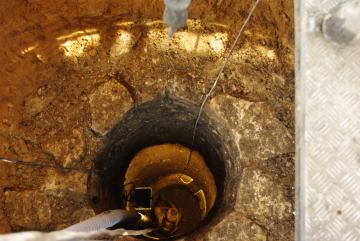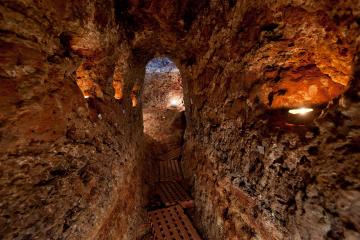You are here
News
- (-) Remove Discoveries filter Discoveries
- (-) Remove Middle Ages filter Middle Ages
A ritual Jewish bath, a mikveh, may have been located a cellar in Saint-Paul-Trois-Châteaux (Drôme). The city entrusted the study of this cellar to an Inrap team.
At Saint-Martin-d’Hardinghem, in advance of the construction of flood retention basins in the Aa river valley, Inrap excavated, in partnership with the Department of Pas-de-Calais, part of the country residence of the bishops of Thérouanne, dated to the High Middle Ages. The archaeologists uncovered 200 m² of decorated pavements, all of which are very well preserved, which is rare.
From 2011 to 2013, an Inrap team, under curation by the State (Drac Bretagne), conducted an integral preventive excavation of the Jacobin convent, the site of the future Rennes Métropole conference center.
Researchers from Inrap and the Pacea UMR, Université de Bordeaux, have published in the PlosOne review, the first archaeological and biological anthropological evidence of this Muslim presence in France during the early Middle Ages.
Until March 2015, and Inrap team is excavating, under prescription by the State (Drac Ile-de-France), 100 m2 of the basement of the Monoprix RéaumurSébastopol store in Paris, in advance of the renovation of this basement into storage space.
Inrap has just completed five months of archaeological excavation at Entrains-sur-Nohain in advance of a private development project, curated by the State (Drac Burgundy). The 1000 m2 explored yielded part of the Antique town of Intaranum. The archaeologists unexpectedly discovered the remains of a mass grave, providing evidence of a massacre of a civil population.
The police headquarters (PH) and the Institut National de Recherches Archéologiques Préventives (Inrap) invite you to travel back in time and to look through a window into the history of Paris on the occasion of an exceptional presentation of the 300 m² of preventive archaeological excavations realized in the center of the Ile de la Cité, at 2 rue Lutèce, within the walls of the police headquarters.This research, taking place in advance of the construction of a new public reception hall, is lead by four specialists of Parisian urban archaeology and one physical anthropologist.








